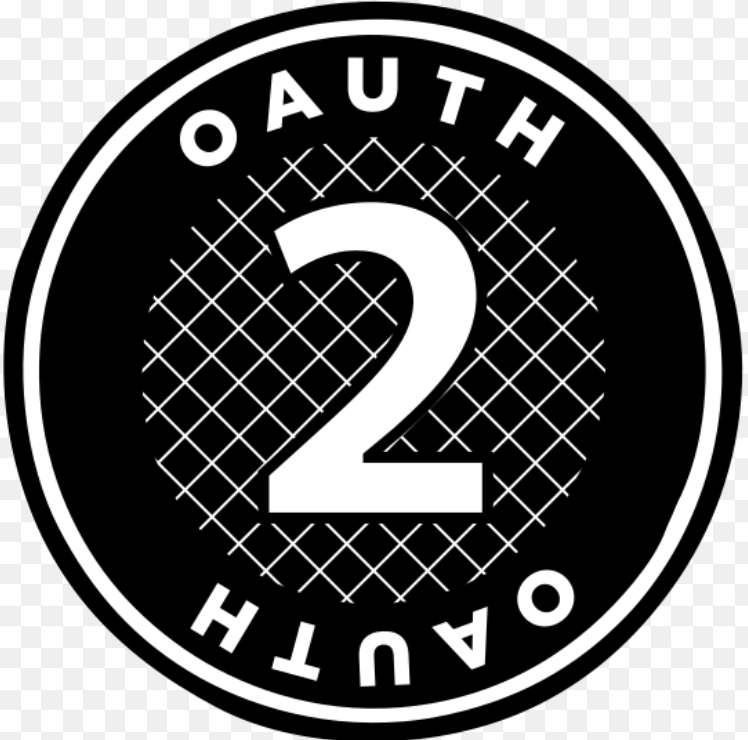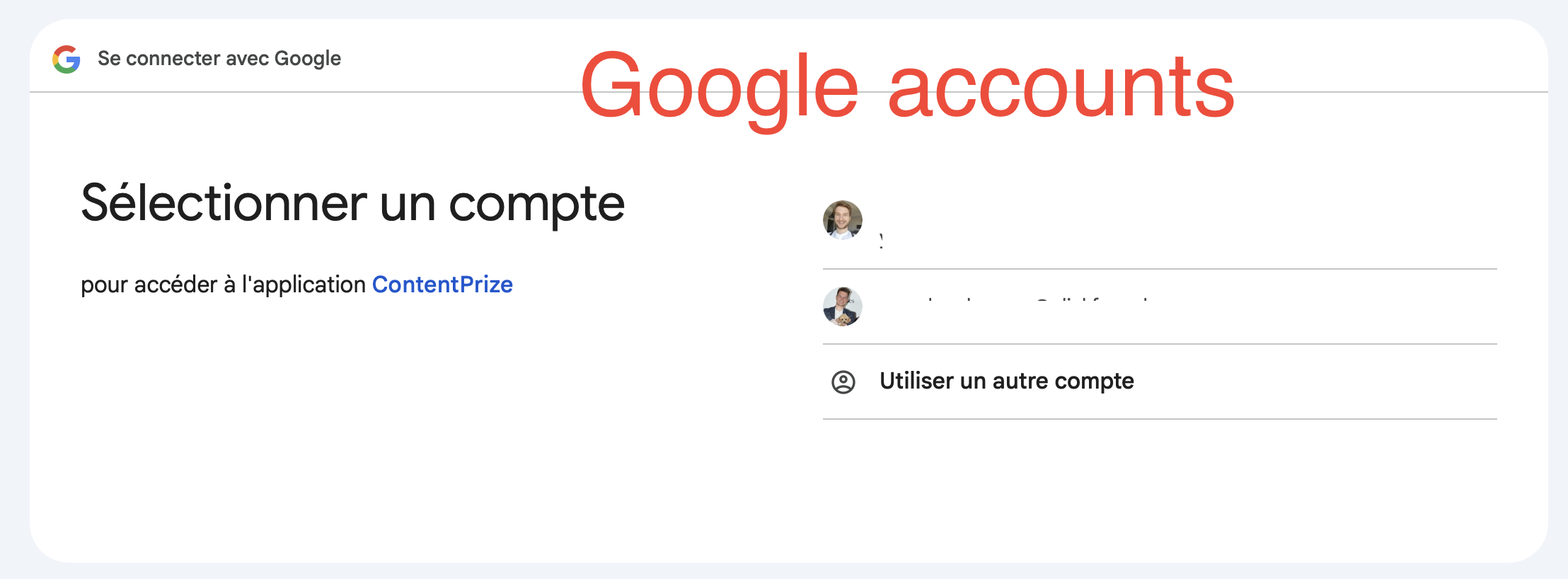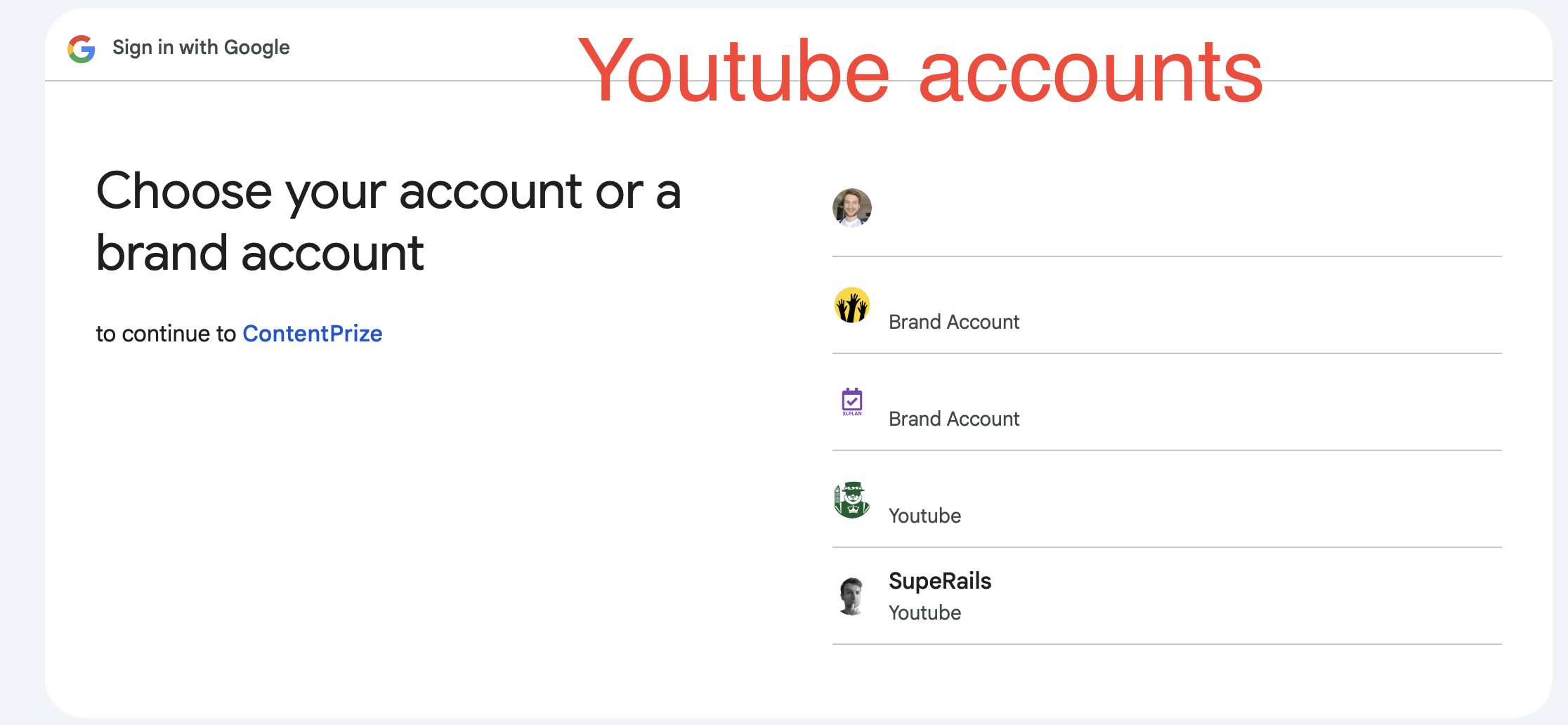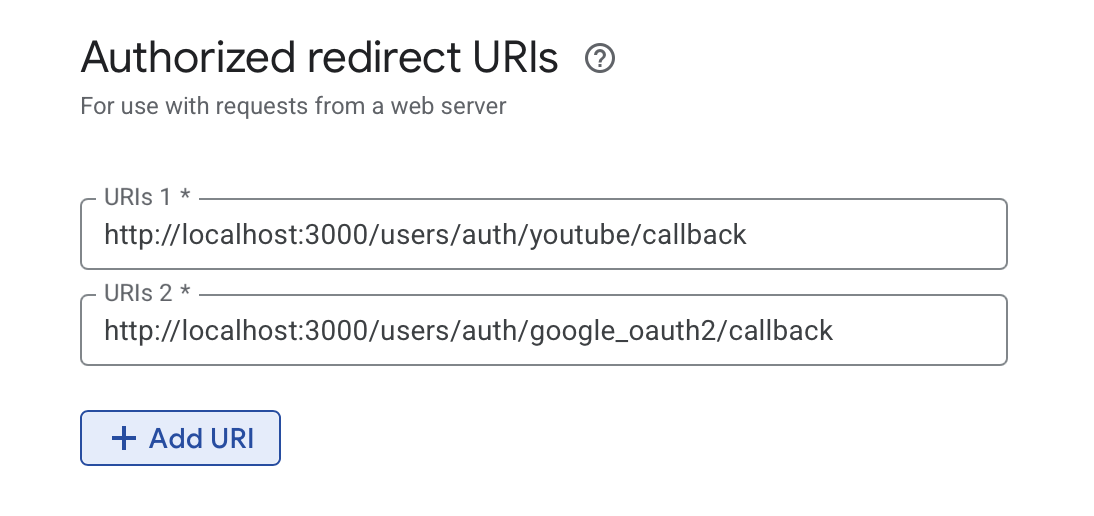 Separate Google and YouTube OAuth Strategies in Rails
Separate Google and YouTube OAuth Strategies in Rails
Sometimes you need to allow users to authenticate with Google while also connecting their YouTube accounts separately. This can be tricky because the omniauth-google-oauth2 gem doesn’t provide a separate YouTube OAuth strategy.
The Challenge #
The Google OAuth strategy distinguishes between Google and YouTube OAuth only by scopes:
-
https://www.googleapis.com/auth/youtube.readonly- Access basic YouTube account data (can be used for auth or “validate ownership”) -
https://www.googleapis.com/auth/youtube.force-ssl- Write access to YouTube account
Here’s what the OAuth screens look like:
Google OAuth screen:

YouTube OAuth screen:

Solution: Custom YouTube OAuth Strategy #
To separate these OAuth strategies, we can create a custom YouTube OAuth strategy on top of the Google OAuth2 strategy:
# config/initializers/omniauth.rb
require "omniauth"
require "omniauth-google-oauth2"
module OmniAuth
module Strategies
class Youtube < OmniAuth::Strategies::GoogleOauth2
option :name, "youtube"
def initialize(app, *args, &block)
super
options.scope = "email,profile,https://www.googleapis.com/auth/youtube.readonly"
# For write access, use:
# options.scope = "email,profile,https://www.googleapis.com/auth/youtube.force-ssl,https://www.googleapis.com/auth/youtube.readonly"
# Use the same redirect URI as Google OAuth2
# options.redirect_uri = "http://localhost:3000/users/auth/youtube/callback"
# options.redirect_uri = "http://localhost:3000/users/auth/google_oauth2/callback"
# options.redirect_uri = "https://contentprize.com/users/auth/youtube/callback"
end
end
end
end
Configure Devise #
Add YouTube as a separate OAuth strategy in your Devise configuration:
# config/initializers/devise.rb
config.omniauth :google_oauth2,
Rails.application.credentials.dig(:google_oauth2, :key),
Rails.application.credentials.dig(:google_oauth2, :secret),
scope: "email,profile"
# Add YouTube as a separate provider using the same Google credentials
config.omniauth :youtube,
Rails.application.credentials.dig(:google_oauth2, :key),
Rails.application.credentials.dig(:google_oauth2, :secret)
Update User Model #
Ensure that YouTube is included in the list of Devise OAuth providers:
# app/models/user.rb
class User < ApplicationRecord
devise :database_authenticatable, :registerable,
:recoverable, :rememberable, :validatable,
:omniauthable, omniauth_providers: Devise.omniauth_configs.keys
end
Google Cloud Console Setup #
In the Google Cloud Console, add separate callback URLs for both providers:

Handle OAuth Callbacks #
Create a controller to handle both Google and YouTube OAuth callbacks:
# app/controllers/users/omniauth_callbacks_controller.rb
class Users::OmniauthCallbacksController < Devise::OmniauthCallbacksController
Devise.omniauth_configs.keys.each do |provider|
define_method provider do
handle_auth provider
end
end
def failure
redirect_to new_user_registration_url, alert: "Something went wrong. Try again."
end
private
def handle_auth(kind)
auth_payload = request.env["omniauth.auth"]
# TODO: Handle logic for User oAuth
user = User.from_omniauth(auth_payload)
if user.persisted?
flash[:notice] = "Successfully authenticated with #{kind.titleize}!"
sign_in_and_redirect user, event: :authentication
else
redirect_to new_user_registration_url, alert: user.errors.full_messages.join("\n")
end
end
end
This way users can authenticate with Google or Youtube
Did you like this article? Did it save you some time?